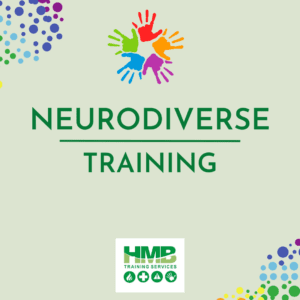First Aid is a life-saving skill that everyone deserves to learn. Creating inclusive first aid courses for autistic learners creates inclusivity and a better classroom learning experience. But for many autistic individuals, traditional First Aid courses can feel overwhelming, confusing, or inaccessible. With the right awareness and a few thoughtful adaptations, trainers can create inclusive, supportive spaces that help autistic learners thrive.
In this blog, we’ll explore why inclusivity matters in First Aid training and how you can make your courses more accessible for autistic participants, without compromising on quality or content.
Understanding Autism in a Learning Environment
Autism is a neurodevelopmental difference that affects how people perceive the world, process information, and interact with others. It’s often described as a spectrum, meaning that each autistic person experiences the world in their own unique way. While there’s no one-size-fits-all approach, there are common experiences that may make traditional training more challenging, such as:
-
Sensory processing differences: Bright lights, loud sounds, or strong smells can be overwhelming or even painful.
-
Social and communication differences: Some autistic people may find group work, small talk, or unclear instructions difficult.
-
Executive functioning challenges: Organising information, following multi-step instructions, or switching between tasks might be harder.
-
Increased anxiety: New environments, changes in routine, and uncertainty can lead to heightened stress.
By recognising these factors, trainers can begin to create more inclusive, welcoming learning spaces that meet individuals where they are.
Creating a Sensory-Friendly Environment
The learning environment itself can make or break a learner’s experience, especially for someone who is sensitive to sensory input. Many autistic people experience sensory sensitivities that others may not notice, which can make it difficult to concentrate or feel comfortable during training.
Here are some simple but effective adjustments to consider:
-
Lighting: Use natural light where possible, or opt for soft, indirect lighting instead of harsh fluorescent bulbs.
-
Sound: Keep background noise to a minimum. Avoid playing loud music or videos without warning, and consider offering ear defenders or noise-cancelling headphones.
-
Visual calm: Minimise clutter and bold patterns on walls or slides. A calm, organised room layout can help reduce visual overload.
-
Smells: Avoid strong scents like air fresheners, perfumes, or certain cleaning products.
-
Quiet zones: If possible, provide a calm space where learners can take a break if they feel overwhelmed.
You don’t need a completely redesigned venue, just a few thoughtful tweaks can go a long way in making the space more inclusive.
Clear and Flexible Communication
Communication is at the heart of any good training course, but it’s especially important when working with autistic learners. Many autistic individuals prefer clear, structured, and direct communication. Vague language or fast-paced instructions can cause confusion or anxiety.
Tips for inclusive communication include:
-
Use visual supports: Incorporate diagrams, charts, or illustrations to explain key concepts alongside verbal instruction.
-
Written instructions: Provide handouts or written summaries so learners can follow along and refer back later.
-
Break it down: Present information in small, manageable chunks rather than overwhelming blocks.
-
Speak clearly: Avoid idioms, sarcasm, or abstract language. Stick to clear, concrete phrases.
-
Give time: Allow processing time after asking questions, some learners need a little more time to formulate responses.
You can also check in periodically: “Would it help if I showed that visually?” or “Would you like that written down?” Giving learners options builds trust and confidence.
Reducing Social Pressure
Many First Aid courses involve group activities, role-playing scenarios, or practising on each other. While hands-on practice is important, it can be anxiety-inducing for autistic learners; especially if they’re unsure of what’s expected or feel pressured to perform socially.
Here are some ways to reduce that pressure:
-
Preview activities: Let learners know in advance what types of tasks or interactions will happen that day.
-
Offer opt-outs: Allow learners to observe rather than participate in roleplay, or practise with the trainer instead of a peer.
-
Pair thoughtfully: If group work is essential, allow learners to choose their own partners or work independently when possible.
-
Encourage without pressure: Use gentle encouragement rather than forcing participation. “Would you like to try?” can feel much safer than “It’s your turn now.”
Reducing social anxiety doesn’t mean compromising on learning—it simply means making it safer for everyone to engage in a way that suits them best.
Flexible Delivery and Support
Flexibility is a core principle of inclusive education. While some learners thrive in standard, fast-paced courses, others need more time to absorb and process information. Offering flexible delivery options can open up your courses to a much wider range of learners.
Ideas include:
-
Modular content: Break the course into smaller sessions across multiple days instead of one long day.
-
One-to-one options: Provide individual training sessions for learners who may benefit from personalised support.
-
Access to materials: Allow learners to review course content in their own time via videos, PDFs, or slides.
-
Extra time: Allow more time for practice and assessment where possible, especially if someone needs to process instructions at a slower pace.
When learners feel supported rather than rushed, they’re more likely to retain information and build confidence.
Ask, Don’t Assume
Perhaps the most important principle in inclusive teaching is this: always ask what the learner needs. Every autistic person is different, and assumptions can lead to miscommunication or missed opportunities.
Before the course, consider sending a simple learning preferences questionnaire asking:
-
“Do you have any sensory needs we should know about?”
-
“Do you prefer written instructions, verbal instructions, or both?”
-
“Is there anything that would help you feel more comfortable during the course?”
This not only helps you tailor the experience; it also reassures the learner that their comfort matters to you.
Inclusion Benefits Everyone
One of the most powerful truths about inclusive design is that when you support neurodivergent learners, you improve the experience for everyone.
Clearer communication helps those who are shy, anxious, or learning in a second language. A quieter, more organised room supports people with ADHD or sensory issues. Flexible options help parents, shift workers, or anyone who learns better at a slower pace.
Inclusion isn’t about creating special treatment. It’s about creating better treatment for all.
Final Thoughts
Creating inclusive First Aid courses for autistic learners is not only possible—it’s essential. By taking time to understand the barriers some learners face and making small, thoughtful adjustments, you’re opening the door to a wider, more diverse group of people who want to learn how to save lives.
Everyone deserves to feel safe, supported, and empowered during training—and that includes neurodivergent learners.
If you’re a trainer, business, or organisation looking to make your First Aid or Health & Safety training more inclusive, I’d love to support you. Get in touch to learn how we can make your sessions accessible to every learner.
Our Neurodiversity Training – Creating inclusive First Aid Courses for autistic Learners
Neurodiversity Training for the Workplace for managers, HR personnel and colleagues. The session aims to increase awareness of neurodiversity in the workplace and allow attendees the opportunity to discuss workplace specific circumstances, develop strategies to support a neurodivergent workforce and identify the next steps for their organisation.

The course includes:
- Overview of Neurodiversity
- Why neurodiversity is important
- Associated neurodevelopmental conditions
- Neurodiversity, mental health and wellbeing
- Overview of Autism Spectrum Conditions
- Communication differences
- Strategies to ensure effective communication
- Cognitive Differences in autism
- Strengths and challenges
- Sensory Differences
- Breakdown of senses
- Hyper/Hypo sensitivity
- Environmental considerations
- Neurodiversity best practice in the workplace
- Examples of reasonable adjustments:
- Recruitment processes
- In the workplace
- Examples of reasonable adjustments:
Our Neurodiversity Training is fully interactive with lots of practical games and tasks to perform, including a lot of opportunities for discussions to embed learning. Creating inclusive First Aid Courses for autistic Learners
More information click here; https://www.hmbtrainingservices.co.uk/latest-news/offer/neurodiversity-training-for-the-workplace



